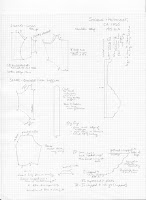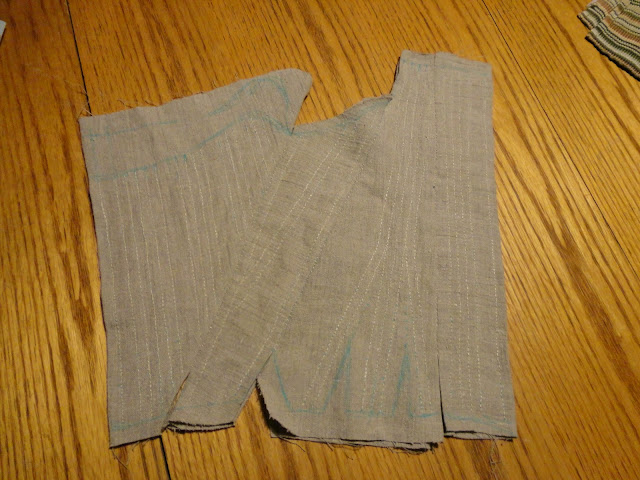Sacque and Petticoat, ca. 1765 - Preview

Today I spent about six hours taking the pattern of the sacque and petticoat that will be displayed in Great, Strange, and Rarely Seen - so I thought I might post the rough draft up here for comments, critiques, &c. I'm going to redraw it in ink for the final version, move pieces around (rotate some), write directions in better handwriting, all that sort of thing, but is there anything that seems odd or confusing or messed up in some way?


